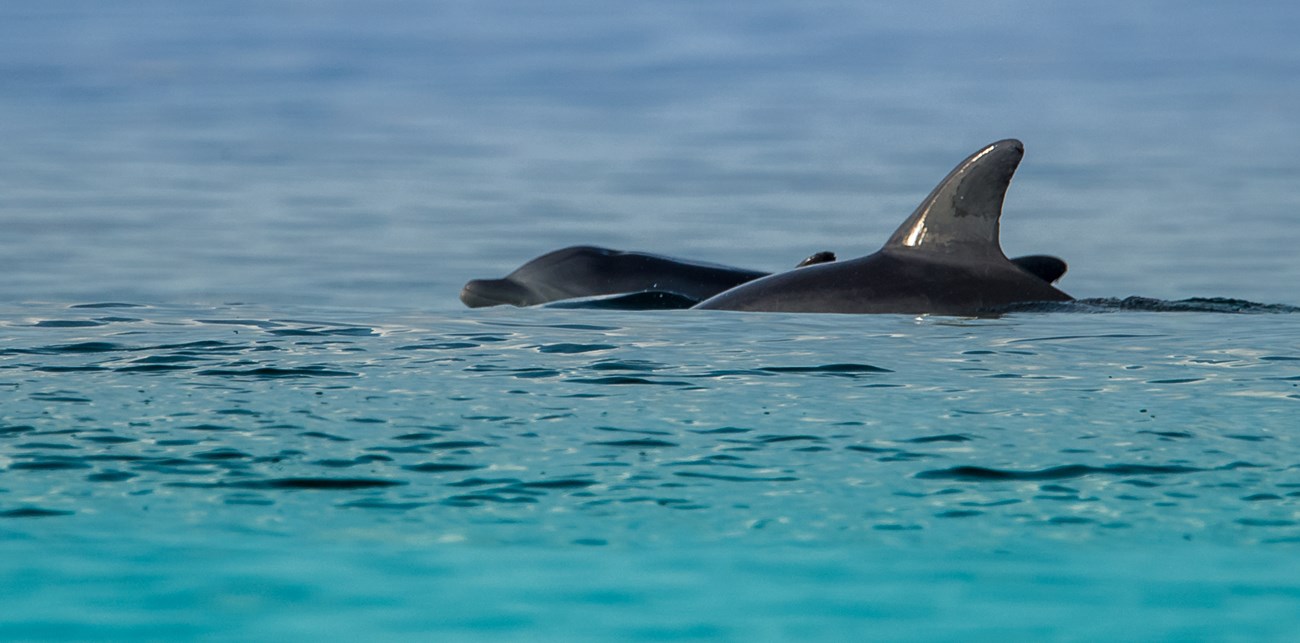
Frank Abbott Dolphins are warm-blooded mammals which means they have several similarities with their land-based mammals including an endothermic vertebrate, breathing oxygen, and having a four chambered heart. Dolphins breathe through a blowhole on top of their head, providing an opportunity for park visitors to catch a glimpse of these animals during a visit. At the park, you’ll likely see several species, including the bottlenose, short-beaked, striped, Atlantic spotted, spinner, and rough-toothed dolphins
Dolphins are fascinating and often entertaining sights along shores, playing, jumping, and even doing flips. However, they also need help to lessen the chance that we impact their natural lives and cause them stress. If you come across dolphins within the park waters, follow the acronym S.M.A.R.T:
S. – Stay back 50 yards from dolphins. M. – Move away cautiously if dolphins show signs of disturbance. A. – Always put your boat engine in neutral when dolphins are near. R. – Refrain from feeding, touching, or swimming with wild dolphins. T. – Teach others to be dolphin smart. |
Last updated: April 24, 2020
